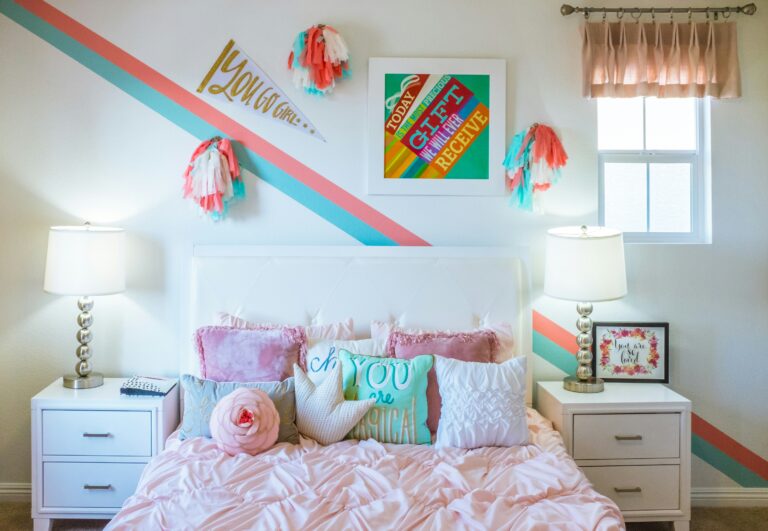(Image: Kenny Eliason: Unsplash)
It’s truly heartbreaking to watch your child in pain. When they are overwhelmed by anxiety, it can leave you, as a parent or caregiver, feeling powerless. Even with the best intentions, like taking them to therapy and encouraging discussions about feelings, their environment significantly influences their emotions. Since kids often retreat to their bedrooms during anxious moments, transforming these spaces into calming areas may help them escape the swirl of anxious thoughts.
Before you start redecorating, make sure to hear your child’s preferences for their room. If they think a Minecraft-themed room will provide comfort and joy, embrace that idea! If not, consider these tips to create an anxiety-reducing environment in their bedroom.
Color Schemes
Begin by selecting a calming color for the walls. Certain colors are known to evoke a sense of peace, such as cool shades of blue, green, and lavender gray. Pastel variations of popular colors like pink and green also contribute to a soothing atmosphere.
Connection to Nature
Nature is beneficial in lowering anxiety levels. If your child finds it hard to go outside, consider bringing elements of nature indoors. Simple touches, like faux vines around their bed or real plants they can care for, can foster a sense of purpose. If they’ve expressed a desire for a pet, starting with a fish could be ideal. Watching fish swim can help ease anxiety and relax their muscles.
Blue LED Lighting
Lighting is crucial in shaping the bedroom atmosphere. If the space is currently lit with harsh fluorescent lights, it may negatively impact their mood. Blue light is known for its mood-enhancing qualities and its effect on the body’s natural rhythms. Incorporating softer blue lighting can help them wind down at night. Various sensory light devices can enhance this experience, offering projections that mimic the calming movements of ocean waves.
Create “Safe Spots”
Sometimes a child just needs a space to be alone, and that’s perfectly acceptable. Designating a safe area in their room can be achieved by adding a children’s teepee or curtains around a bunk bed’s lower level to add privacy. Fill this retreat with comfortable cushions, pillows, and games. While it may be tempting to provide gaming consoles in the bedroom, this can heighten anxiety and disrupt relaxation time. Keep technology out and focus on creating a peaceful space.
Keep Schooling Separate
Another common mistake is putting a desk in their bedroom for homework. When a child is battling anxiety, schoolwork can evoke negative feelings or memories. Encourage them to do homework in a shared area where you can provide support. Separating spaces for different activities can instill a sense of security, ensuring their bedroom remains a sleep-friendly zone. If your child enjoys art, you might allocate a small table and chair for creative projects.
Encourage Rest & Relaxation
Fostering relaxation is essential in modifying your child’s bedroom to lessen anxiety. Focus on crafting an environment that promotes coziness and gives the message that it’s a safe place to unwind. Opt for high-quality, soft bedding and cozy throw blankets that make their bed an inviting retreat. Adding plush pillows or weighted blankets can create a feeling of security and tranquility.

(Image: Pexels: Vika Glitter)
Creating an Anxiety-Reducing Space
By transforming your child’s bedroom into a calming environment, you can significantly enhance their emotional well-being. Focusing on soothing colors, natural elements, effective lighting, and safe zones will help establish a sanctuary for relaxation. Remember, every child is distinct, so it’s crucial to involve them in the design process to cater to their individual preferences and needs.
Small adjustments in their surroundings can lead to meaningful improvements in their ability to manage anxiety and feel secure. While this is an important step, combining it with emotional support, therapy, and open communication can enable your child to handle their emotions more resiliently. A cozy, tranquil bedroom can become their haven—where they can relax, recharge, and truly feel at home.
Author Bio
Amy Jones is a freelance writer passionate about various topics, from mental wellness to home improvement, and enjoys staying up-to-date with the latest trends. With experience collaborating with different businesses, including Petite Lumeire, she now specializes in writing about children’s mental and physical health.


